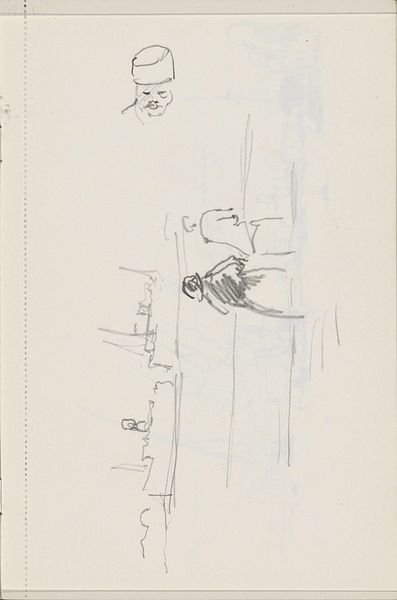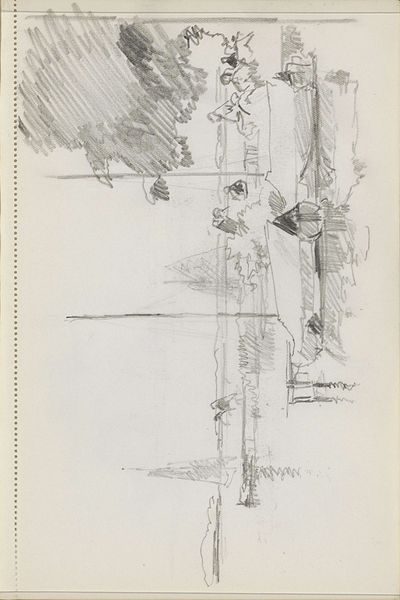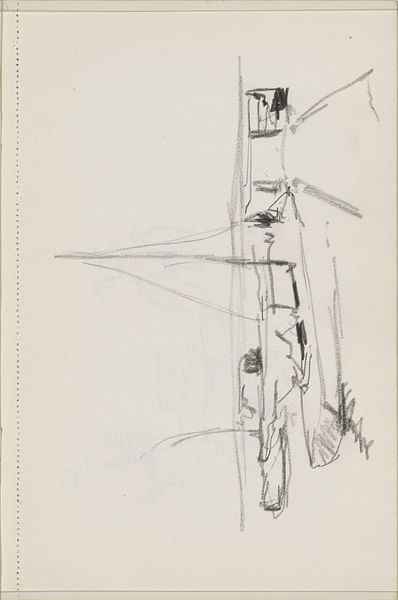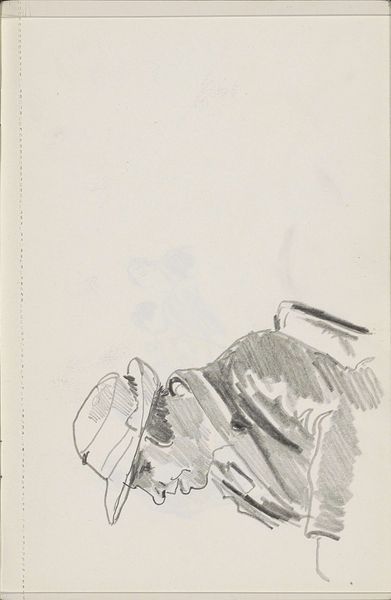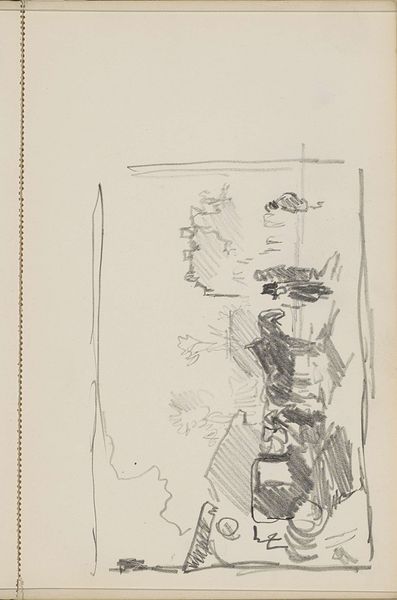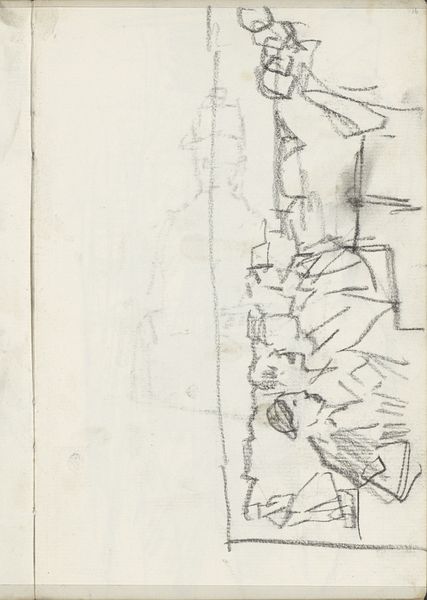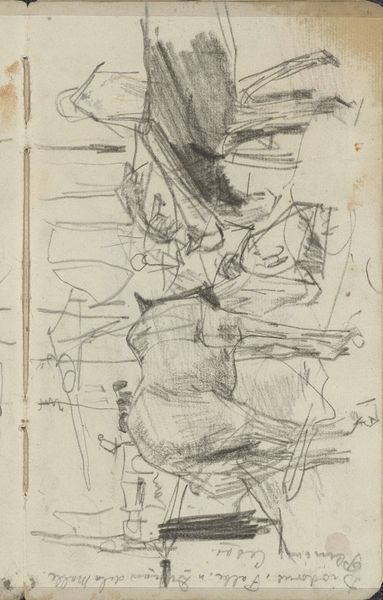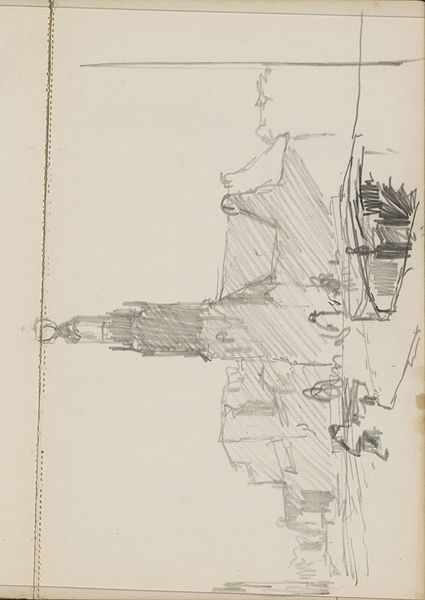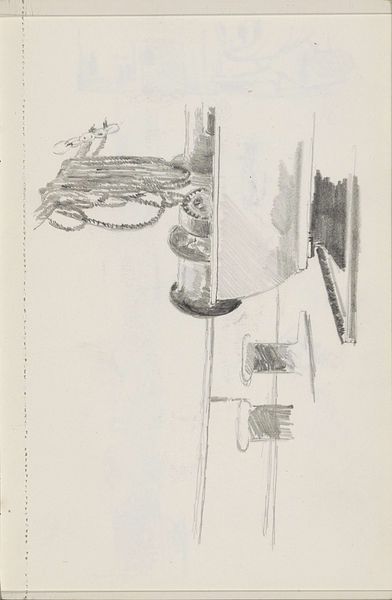
drawing, pencil
#
portrait
#
drawing
#
pencil sketch
#
figuration
#
pencil
#
horse
#
realism
Copyright: Rijks Museum: Open Domain
Curator: Alright, let's delve into this sketch by Cornelis Vreedenburgh, titled "Horse and a Man with a Cigar and Top Hat." It's believed to have been created sometime between 1890 and 1946, and it’s a beautiful example of his pencil work, currently residing here at the Rijksmuseum. Editor: Immediately, I’m struck by the fleeting nature of it, that capturing-a-moment quality. Like a quick sketch from a train window perhaps, a half-remembered dream now rendered in pencil on paper. Curator: Precisely. The medium here – graphite on paper – speaks to accessibility and the democratization of art. Sketching became more widespread during this period as materials became more affordable and art education broadened its reach. Vreedenburgh wasn't bound by oils and canvas; his artistry thrived within the immediacy of pencil and paper. The availability of materials directly impacted artistic expression. Editor: Yes, I feel that directly. It has such raw, unvarnished honesty to it, don’t you think? You can almost smell the cigar smoke mingling with horse sweat! There is such a sense of life there, hastily yet deliberately put down, like the artist trying to capture something about to disappear. Curator: I agree. The 'Realism' style emphasizes everyday subjects like this horse and man, moving away from idealized or historical scenes. Vreedenburgh focused on portraying the world around him and perhaps captured the social interactions and the role of work that dominated this era. Editor: What I also like is the composition. The slightly tilted angle of the figures introduces a quiet kind of tension – is it stable, or about to topple over? It sort of mirrors the rapid industrial changes of that time too. It's almost like Vreedenburgh used this composition to ask: "Are we okay, or about to tumble into something else entirely?" Curator: That's a brilliant observation! This drawing reflects how social and economic factors affected art. Vreedenburgh responded to his era and created pieces that reflected these shifts. It serves as a tangible record of cultural experiences in that particular time. Editor: In essence, this deceptively simple sketch packs quite the punch when we reflect upon it and all those different angles we've explored. Curator: Indeed. We've illuminated both the artistic creation and how socio-economic realities were intrinsically intertwined, and left no part of life untouched, including this piece we were fortunate enough to look at.
Comments
No comments
Be the first to comment and join the conversation on the ultimate creative platform.
